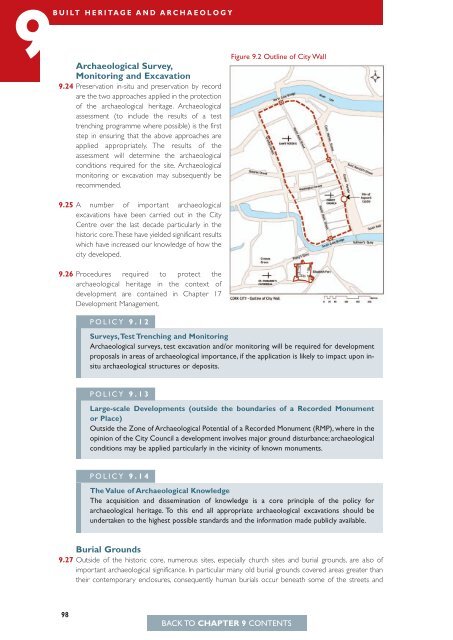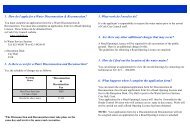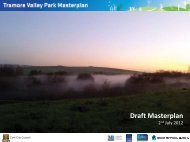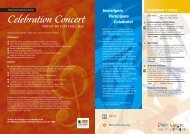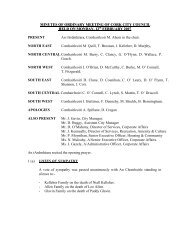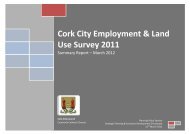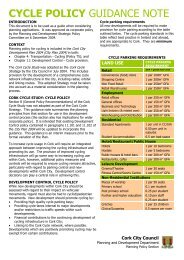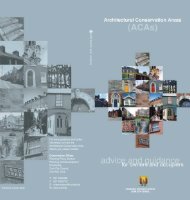Development Plan Chapter 9 Built Heritage - Cork City Council
Development Plan Chapter 9 Built Heritage - Cork City Council
Development Plan Chapter 9 Built Heritage - Cork City Council
Create successful ePaper yourself
Turn your PDF publications into a flip-book with our unique Google optimized e-Paper software.
9BUILT HERITAGE AND ARCHAEOLOGY<br />
Archaeological Survey,<br />
Monitoring and Excavation<br />
9.24 Preservation in-situ and preservation by record<br />
are the two approaches applied in the protection<br />
of the archaeological heritage. Archaeological<br />
assessment (to include the results of a test<br />
trenching programme where possible) is the first<br />
step in ensuring that the above approaches are<br />
applied appropriately. The results of the<br />
assessment will determine the archaeological<br />
conditions required for the site. Archaeological<br />
monitoring or excavation may subsequently be<br />
recommended.<br />
9.25 A number of important archaeological<br />
excavations have been carried out in the <strong>City</strong><br />
Centre over the last decade particularly in the<br />
historic core.These have yielded significant results<br />
which have increased our knowledge of how the<br />
city developed.<br />
9.26 Procedures required to protect the<br />
archaeological heritage in the context of<br />
development are contained in <strong>Chapter</strong> 17<br />
<strong>Development</strong> Management.<br />
POLICY 9.12<br />
Figure 9.2 Outline of <strong>City</strong> Wall<br />
Surveys,Test Trenching and Monitoring<br />
Archaeological surveys, test excavation and/or monitoring will be required for development<br />
proposals in areas of archaeological importance, if the application is likely to impact upon insitu<br />
archaeological structures or deposits.<br />
POLICY 9.13<br />
Large-scale <strong>Development</strong>s (outside the boundaries of a Recorded Monument<br />
or Place)<br />
Outside the Zone of Archaeological Potential of a Recorded Monument (RMP), where in the<br />
opinion of the <strong>City</strong> <strong>Council</strong> a development involves major ground disturbance; archaeological<br />
conditions may be applied particularly in the vicinity of known monuments.<br />
POLICY 9.14<br />
The Value of Archaeological Knowledge<br />
The acquisition and dissemination of knowledge is a core principle of the policy for<br />
archaeological heritage. To this end all appropriate archaeological excavations should be<br />
undertaken to the highest possible standards and the information made publicly available.<br />
Burial Grounds<br />
9.27 Outside of the historic core, numerous sites, especially church sites and burial grounds, are also of<br />
important archaeological significance. In particular many old burial grounds covered areas greater than<br />
their contemporary enclosures, consequently human burials occur beneath some of the streets and<br />
98


